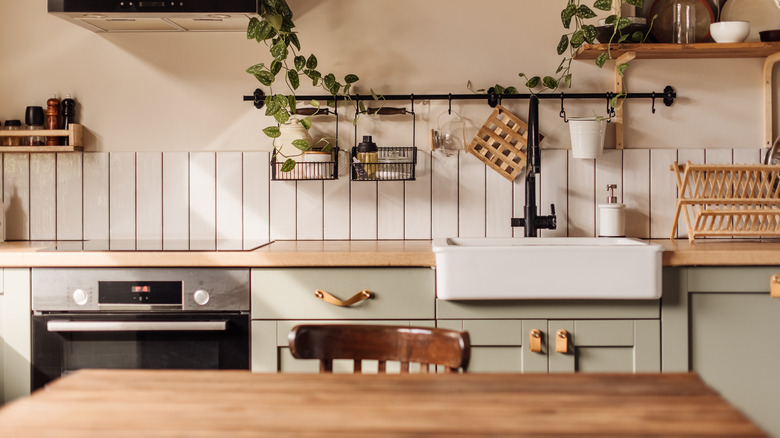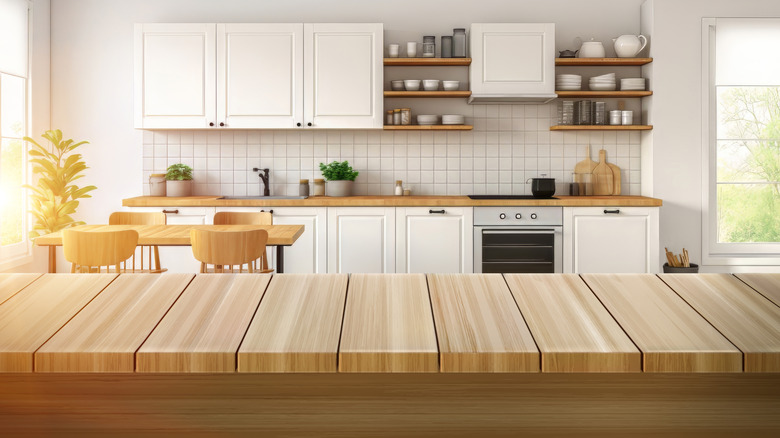Can You Paint Kitchen Countertops? (Well, It Depends)
When it comes to ways to easily and cheaply update your kitchen, painting your countertops is a tempting idea. Unlike installing new countertops, this is a simple, if time-consuming, task you can do yourself to save money. But Jo Rich, designer at Raydoor Sliding Walls & Doors, told Food Republic that this isn't viable for every material.
"Painting countertops can refresh outdated laminate or wood surfaces," she said. "Laminate accepts bonding primers and specialized countertop paints well. Solid wood can be painted or stained, though heavy use may cause chipping over time." But paint selection isn't limited to just color, as your kitchen countertops invariably get more wear and tear than your ceilings and walls. Just like using peel and stick products for counters or backsplashes, the wrong choice of paint can show more damage to surfaces caused by everything from banging pots to an ill-advised kitchen decor choice, heavy display items.
Should you opt to paint your laminate or wood countertops, stick with water-based and high-gloss acrylic paint. This type dries into a protective shell that preserves your surface's material from common kitchen accidents. "With that said, I would recommend to avoid painting natural stone or engineered quartz as paint won't adhere long term and will look artificial," explained Rich. There are several steps required to properly paint a kitchen countertop, and unfortunately, stone, quartz, or granite countertops simply don't respond well to them.
How to paint kitchen countertops
If you've ever done any interior painting, you know it's not as simple as slapping on a coat and calling it a day. If you want your countertop upgrade to look clean, professional, and lovely, you'll have to follow Jo Rich's step-by-step process to ensure the material is preserved and the paint sets and dries well.
"Clean [counters] thoroughly with a degreaser like TSP," Rich told us. "Lightly sand and wipe [it] down with a tack cloth. Apply a bonding primer suited to your surface — laminate or wood — and let it cure." Sanding wooden surfaces creates almost imperceptible roughness, which lets paint sink in and set properly. Stone, however, is smooth and almost impossible to sand properly, so your paint won't be able to properly adhere to the surface.
Once you've finished the fun part of the job (painting), Rich explained that it's time to preserve all your hard work and make your countertops really shine. "After painting ([two or three] coats of countertop paint or epoxy), seal [it] with a clear epoxy or polyurethane topcoat rated for heat and moisture. Pay extra attention to seams and edges to prevent water infiltration." A properly applied sealant is magic for protecting your paint, but unfortunately, stone's porous nature makes it absorb sealant rather than let it set properly on the paint. So, if you're one of those folks who think granite countertops are no longer in style, it might be time to look into replacing them entirely.


